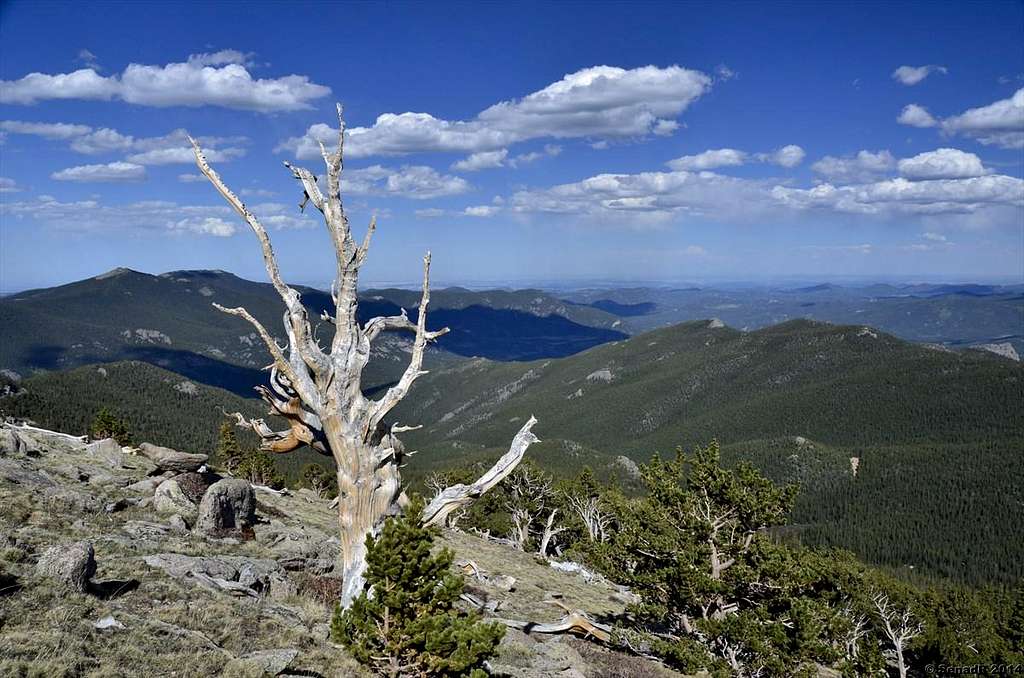
Another strategy for surviving is the gradual dieback of bark and the tissue that conducts water (xylem) when the tree is damaged because of fire, lightning, drought or damaging storms. This reduction of tissue that the crown has to supply with nutrients, balances the effect of any damage sustained. The surviving parts remain quite healthy. As an example, "Pine Alpha" at over 4000 years, is nearly four feet in diameter, yet has only a ten inch strip of living bark to support it.
Invasions from bacteria, fungus or insects that prey upon most plants are unknown to the bristlecone due to their dense, highly resinous wood. The dry air common in the sub-alpine region can kill by desiccation , but also helps preserve the trees from rotting.
Bristlecones can remain standing for hundreds of years after death. They fall because the supporting roots finally decay or are undermined by erosion.
The oldest bristlecones live in the most exposed sites, with a considerable amount of space between each tree. The longevity of the bristlecone needles and the inability of other plants to grow in the dolomite soil make for little leaf litter or ground cover. This distance in between, combined with the lack of ground cover, is how a tree can sustain a lightning strike, catch fire, and not have the fire spread to surrounding trees.
Even the oldest trees have the ability to produce cones with viable seeds.
Source: The Ancient Bristlecone Pine
(June 2014)
